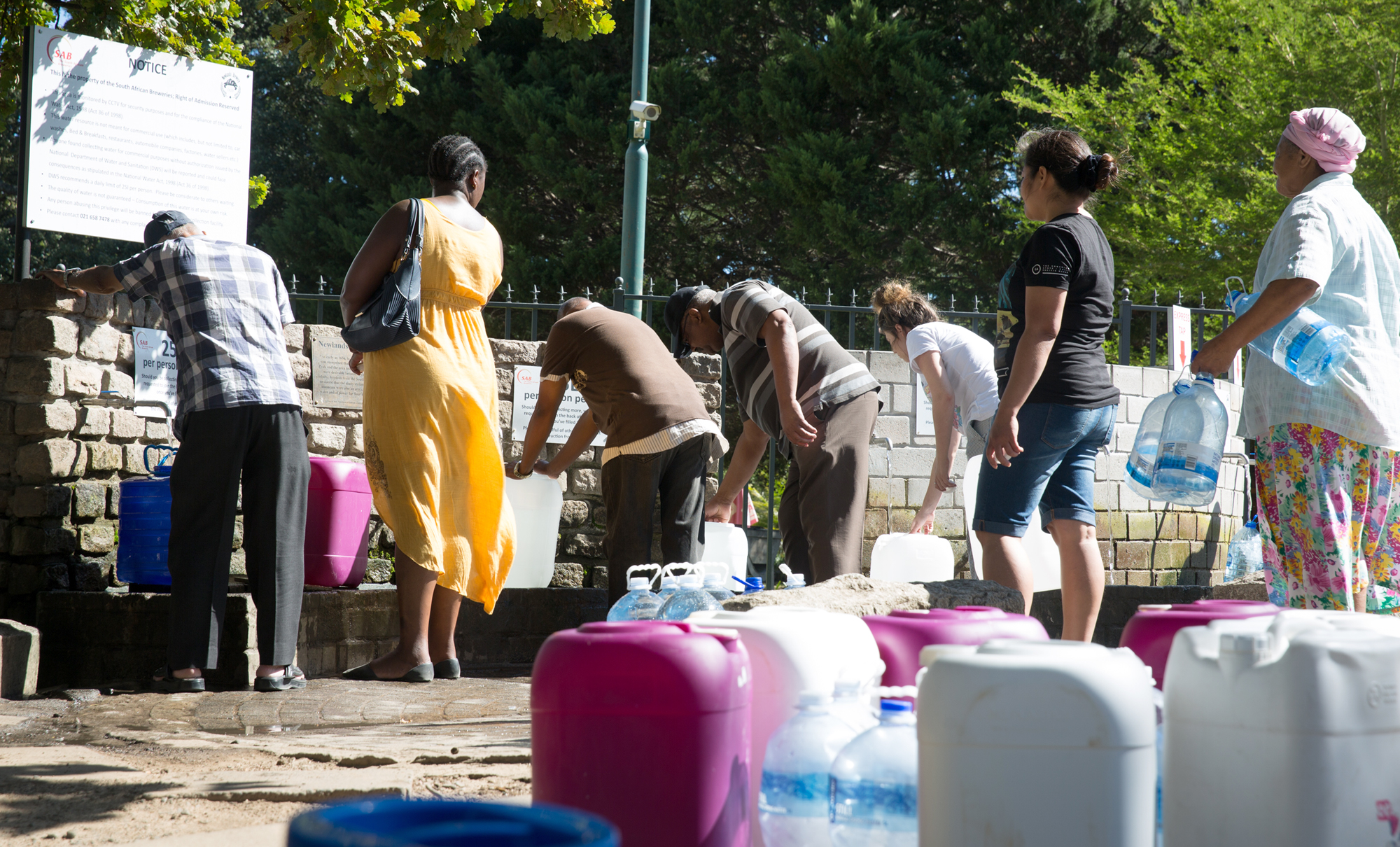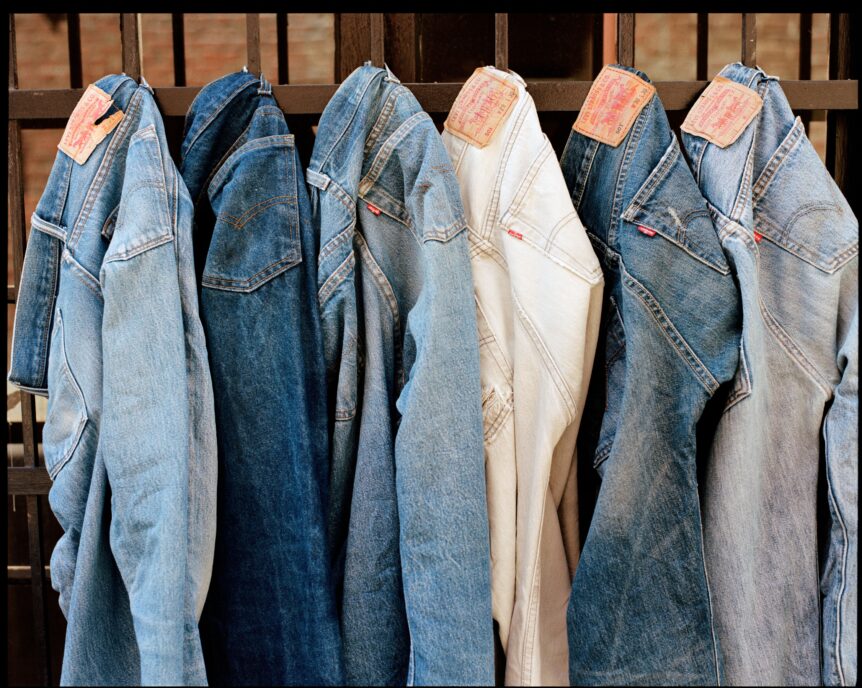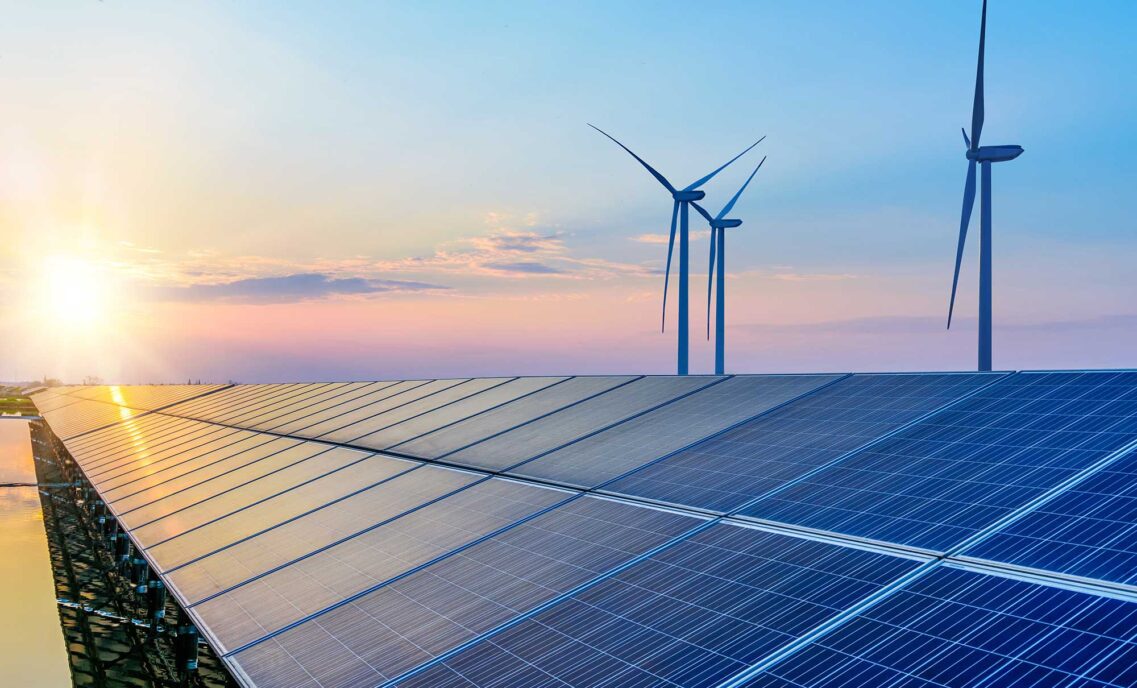In 2017, after years of severe drought, Cape Town, South Africa, population 4.5 million, was facing a “Day Zero” scenario in which the city’s water supply would run completely dry. Staff at Levi Strauss & Co.’s owned-and-operated factory in the Epping area of Cape Town were among those watching anxiously.
“People were asking every day, ‘are we going to have water, are we going to stay open?’” recalled Peter Waddington, the factory’s product development manager.
“It was a real wake-up call that showed us we had to protect the business, do the right thing for the community and contribute to solutions that went beyond just our own operations,” added Gavin Van Der Horst, director of manufacturing for the region.
The team acted quickly, kicking off what became an overhaul of the LS&Co. facility’s water use infrastructure. First, as a short-term step, they drilled a borehole that allowed them to draw brackish, non-potable water for factory operations so more of the city’s water supply could be preserved for its residents. In addition, the team installed a water treatment plant that could enable the use of treated saltwater or recycled water, setting the stage for the factory to drastically reduce its connection to the city’s precious freshwater supply. Simultaneously, product development and finishing teams dramatically increased their use of LS&Co.’s Water<Less® finishing techniques, which reduced water use for manufacturing by more than 25 percent.
Thankfully, Day Zero was averted due in part to aggressive rationing and, eventually, much needed rains. The team at Epping nonetheless understood the importance of making both the factory and the surrounding watershed as resilient as possible. As a result, the Epping team began working with the city of Cape Town to develop a system whereby the facility would use only recycled water. Typically, treated wastewater in Cape Town and other coastal cities is discharged into the ocean. But by returning treated water to the Epping industrial area, LS&Co. and neighboring businesses could tap a reliable alternative to local freshwater.
Over the past two years, nearly two kilometers of piping have been laid from a municipal treatment plant on the coastline to Epping, where LS&Co.’s own treatment plant readied the reused water to meet 100 percent of the factory’s manufacturing needs. The pipeline is in final testing stages now; once it’s operational, Epping’s manufacturing will completely decouple itself from Cape Town’s freshwater supply. This will help augment local water supplies and put the city in a better position to withstand any future water crises.
“It’s been a long journey, but we know what an important step this is,” said Peter, a central figure in the team’s response – from the installation of the water plant and pipeline to driving water-efficiency through the application of Water<Less® finishing methods. Thanks to the efforts of Peter and the garment finishing team, led by Precious Mkhize, 94 percent of the factory’s products are now made with Water<Less® techniques.
What’s more, LS&Co. grants to The Nature Conservancy’s (TNC) Greater Cape Town Water Fund enabled training and work for 20 local women who have been removing invasive — and very thirsty — shrubs from the Atlantis aquifer, freeing up over 120 million liters for the local water supply in the process. (In total, the TNC fund has freed up more than 4.8 billion liters of water per year for the basin.) It’s a nature-based solution that creates local economic opportunity and supports water resilience for the entire basin.
Tackling Water Stress
Cape Town is not alone in facing water stress. Its water crisis highlighted the critical importance of addressing water stress in the context of where it occurs around the world. For decades, LS&Co. has been developing and implementing programs designed to address water consumption and pollution across the apparel value chain — from cotton fields to manufacturing to consumer care. Lessons learned over time fed into the 2025 Water Action Strategy that LS&Co. announced last summer, which focused our efforts on saving water where it’s needed most and supporting the resilience of the watersheds and communities where we operate.
By holding ourselves accountable for the water our facilities and our suppliers use and by taking a “beyond the fence line” approach to promote watershed health, we can help our supply chain become more resilient to water stress while also promoting sustainable water management and commerce in water-stressed communities. The ultimate goal is to bring us to a point where we use only as much water as replenishes naturally, wherever we operate.
We realize that we can’t go at this alone. Late last year, we convened a workshop at our San Francisco headquarters with our competitors and key stakeholders to share our new strategy and facilitate conversations on best practices to address water-related issues across apparel value chains. And earlier this year, we joined cross-industry water stewardship leaders in launching the Water Resilience Coalition, a group of companies and expert stakeholders committed to working together to develop water resilient value chains and drive net positive impacts on water basins.
Always a necessity, access to safe and reliable freshwater has become even more critical during the COVID-19 pandemic and given the profound impact climate change is having on the planet. That’s why our work to drive water resilient operations is more important than ever, and why we are committed to pushing our programs even further in the years ahead.







